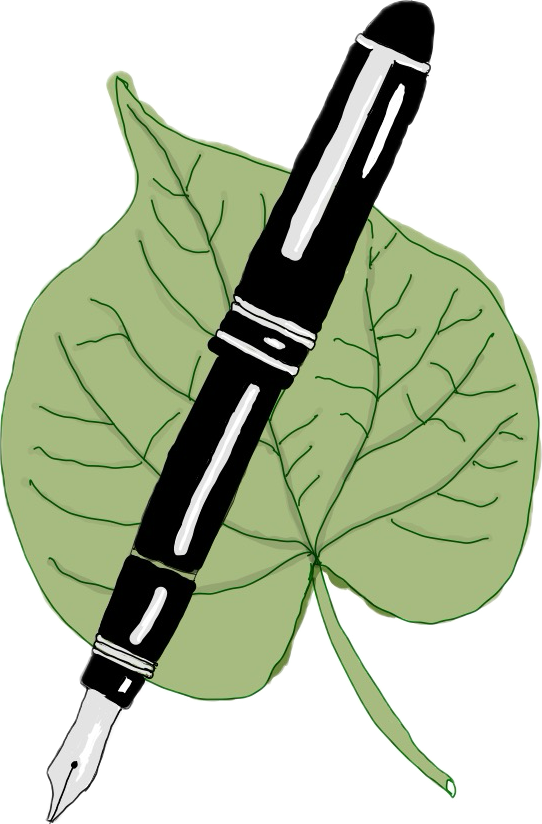
Favorite Plant Essays
Essays in Magazines
Essays on this page tend towards the literary form, for more science-focused essays, please click here.
–——————————————————————————————————––
Hannah Austin: Jewel Thief
published in Hippocampus Magazine
A flash essay on house plants, looking at Wales across the water, and recovering from addiction.
Emily Brisse: Held
published in Sweet
Flash about holding and being held, featuring an oak stump.
K-Ming Chang: Consequences of Water
published in Asian American Writers' Workshop
How to eat kumquats for their skins, peel anything with a cleaver, understand bones grow into bodies like a tree, and believe coconuts fly from trees like ducks, bearing milk in their bellies.
Lucinda Cummings: Citrus Trees
published in Hippocampus Magazine
A mother's road trip with three citrus trees to fulfill the only one of her son's dreams she has the power to bring to fruition.
Annie Dillard: Pilgrim at Tinker Creek
An essay collection in book form.
Emily Jaeger: Sensitive Plants
published in Booth
A short, segmented essay about touching and being touched. If you've never thought of "columbus" as a verb, this one is for you.
Fiona M. Jones: Moss
published in Longleaf Review
A CNF flash, as small, green and lush as its title.
Brenda Miller: The Burden of Bearing Fruit
from: Listening against the Stone: New and Selected Essays
A Rainier cherry in the authors' yard beams out "Welcome Home" for many years, holding the house in an embrace that provided solace in the midst of much loneliness. The decision to fell the tree precipitates a string of tree-related memories on the difficulties of relationship, a melancholy journey that ends in unexpected redemption.
Students tend to point out that Miller sounds "whiny"; many can't relate and would rather be reading something upbeat. Teachers tend to point out that her mastery of essay structure alone merits time spent with her writing. My gratitude goes out to her for connecting trees, described with eloquent vivacity, to an intensely emotional presence within her own life.
Sarah Marie Neilson: The Queer Diary of an Extreme Heterozygote
published in Catapult
Arsenic-sugar botanical facts about scarred heartwood; a story about how "apples are somewhere between vanilla and bananas" that grows and grows, one knock-out sentence at a time.
Christen Noel: Oxalis in Parts
published in Gordon Square Review
A lyric essay on Ohio's intersections between urban and rural, wild and wasted, told in plant imagery that lives on telling true names.
Robert James Russell: Quaking Aspen
published in Pidgeonholes
On one of the oldest organism on Earth and the choice not to have children.
Ellen Samuels: Sick and Well Time
published in Brevity
Disability, visible and invisible, collapsing tomato cages, blight, and "Early Girl" fruit.
Amy Stuber: A Tree that May in Summer Wear
published in Cincinnati Review miCRos
Chain saws, ash borer, and the thousand changing faces of mother-daughter relationships.
Dot Armstrong: The Compost Manifesto
published in Sinking City
Gorgeous language on decomposition and its role in our future.
Essay Collections
Annie Dillard: Pilgrim at Tinker Creek
A classic that helped to define nature writing. The “plantiest” part that has stuck with me is the chapter about “the tree with the lights in it”, in which the narrator has a revelation about a new way of seeing.
Robin Wall Kimmerer: Braiding Sweetgrass
A collection of essays about combining native knowledge and scientific exploration of plants. A PhD moss-ecologist and member of the Potawatomi nation walks her readers through interactions with plants in upstate New York. She seeks to make peace between her native and scientific heritage, braiding words from both languages, and inviting her readers to watch and learn into two cultures. Her chapter about the history of Onondaga Lake, sacred to the Onondaga and rendered toxic by Honeywell corporation, recently returned to the care of native people for restoration, is worth the read all by itself.
Robin Wall Kimmerer: Gathering Moss
You will emerge from each chapter of this book with new eyes, finding your world suddenly filled with moss you previously had no idea was there. From bogs in the Adirondacks and old growth forests of the Pacific Northwest right to the crannies of your walls and roof shingles and sidewalks grow marvels of beauty, the plants that turn bare stone to fertile soil by their wild abilities to adapt and survive and make this world a habitable place. Each chapter weaves the life history of a particular kind of moss with the author's own life history, weaving knowledge into true enchantment.
Christina Rivera: My Oceans
This book blew me away with its intensity and beauty of language. If you are scared about the destruction and suffering humans create for other beings, this book will make you feel that you are not alone.
